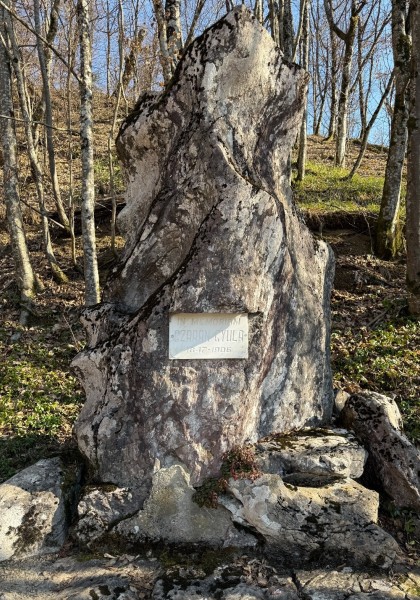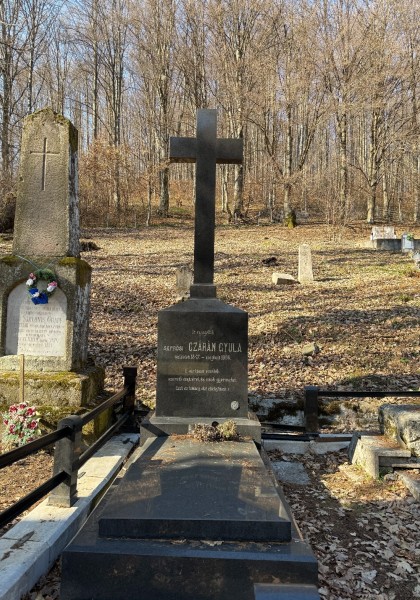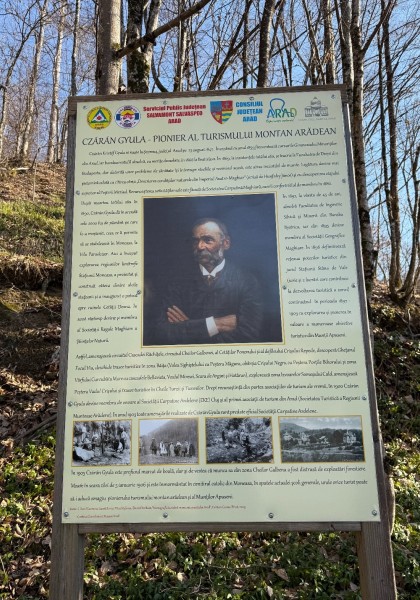Description
Gyula Czárán was born in 1847 in the village of Șepreuș, Arad County, into a family of merchants of Armenian origin who had been elevated to nobility. He spoke Hungarian and Romanian, and later, during high school in Bratislava, he also learned German. Passionate about engineering and music—often playing the piano without sheet music—he still respected his father's wish to study law, first in Budapest, then in Vienna. In 1871, he was forced to abandon his studies and return to Arad after developing a severe form of pneumonia and chickenpox. As doctors recommended fresh mountain air, Czárán came to know the Bihor Mountains and Codru Moma Mountains, falling irreversibly in love with them. He opened hiking trails, arranged caves, and collaborated with locals, turning them into tourism guides.
➡️ His Accomplishments
He was the first to arrange the Meziad Cave and used dynamite to open the Vadu Crișului Cave. He created spectacular routes, such as the Someșul Cald Gorges, the Ponor Citadels Circuit, and the Galbena Circuit, all using his own funds. Despite a rocky start—when locals considered him a "werewolf" for wandering the forests and mountains alone—he eventually gained their trust and showed them that tourism could bring economic benefits.
🏕 A Dedicated Man
Czárán lived among the mountains, alongside the locals, subsisting on bread and bacon, and reading Homer or Byron. He studied forestry to learn how to design trails and became a member of the Transylvanian Carpathian Society.
🌄 His Legacy
His favorite place was the Galbena Valley area, which he turned into an "earthly paradise." His monument in Moneasa stands as a reminder of the passion, courage, and generosity of this man who paved the way for tourism in the Apuseni Mountains.


